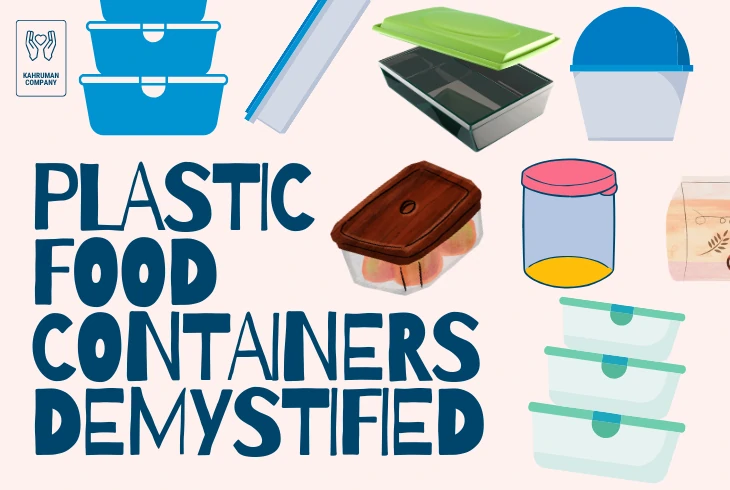What are product specifications?
You've come to the right place if you're searching for product specifications (descriptions). Product specifications are detailed descriptions of a product's characteristics, features, sizes, and attributes. Specs provide essential information about a product's physical and technical aspects, such as its size, weight, materials used, color, performance standards, safety requirements, model, and other relevant details.
Specifications (elements) serve as a standard that a product must meet to be considered suitable for use in model, dimensions and capacity. They are crucial for buyers, who must ensure that the products they purchase meet their needs and business requirements. By reviewing product specs, buyers can determine if a product will work for their intended purposes and help avoid potential problems or issues with product quality.
Product specifications provide essential details about a product's features (document or sheet) and standards (data). They are critical to ensuring that buyers make informed decisions when purchasing products. If you're looking for a product that meets your specific needs, reviewing the product specifications is an essential step in the purchasing process.
What is product specification(PS) in purchasing?
Product specs in purchasing refer to the detailed requirements and standards in a document that a product must meet to be considered suitable for purchase. This document that outlines and defines a particular product's characteristics, features, and attributes, including its physical and technical aspects.
The document data of product specification in purchasing is crucial to ensure and explains that the product meets the specific needs and requirements of the purchaser (construction). It helps avoid potential problems (finished) troubles or issues with product quality and ensures that the product is fit for its intended purpose.
Product specification in purchasing is a critical aspect of the purchasing process that ensures that the product meets the specific needs and requirements of the purchaser. It is essential for wholesale buyers who purchase products in bulk, and it helps avoid any potential product quality issues .
What is the product specification file?
- A product specification file is a document data containing finished technical information and data related to a product.
- It serves as a comprehensive record of a product's design, development, blueprint, and performance.
- The file includes detailed information about the product's design (outlines), features, sizes, materials, manufacturing process, testing procedures, performance standards, and safety requirements.
- It may also contain drawings, schematics, and other visual representations of the product's components and features.
- A product specification file is used for quality control, regulatory compliance, and product maintenance.
- It is required by regulatory agencies as part of the product approval process (spec).
- Customers or wholesale suppliers may request the file to prove the product's quality and safety.
You can read more information about: A Step-by-Step Guide to Finding Wholesale Suppliers in Turkey
How do you identify product specifications?
Standard product specifications can be identified through several methods depending on the source of library information. Here are a few ways to identify product specifications:
Check the product label: Many products have labels that include basic information about the product, such as size, weight, and materials used.
Review product documentation: Most products come with some form of documentation, such as a user manual or product data sheet, that provides detailed information about the product's features, technical specifications, and performance standards.
Check the manufacturer's website: Manufacturers often provide detailed information about their products on their website, including specifications and technical data.
Contact the manufacturer or supplier: If the product specifications are not readily available, you can contact the manufacturer or supplier directly to request more information.
Check product reviews: Customers who have purchased and used the product may provide helpful information about the product's specifications, performance, and quality in their reviews.
Read more about: Comprehensive Guide for Wholesale Distributor: Tips and Tricks
Why are product specifications necessary for wholesale buyers?
Product specifications are essential for wholesale buyers because they help ensure that the products they purchase meet their specific needs and requirements. Here are some reasons why product specifications are essential for wholesale buyers:
Quality control: Product specifications help wholesale buyers maintain consistent quality standards across their inventory. Buyers can avoid potential quality issues and ensure customer satisfaction by ensuring that products meet specific standards and requirements.
Cost control: Product specs can also help wholesale buyers control costs. By specifying the exact materials, dimensions, and other details of a product, buyers can ensure that they purchase products that meet their needs at the most competitive prices.
Compliance: Many products must comply with industry or regulatory standards. By reviewing product specifications, wholesale buyers can ensure that the products they purchase comply with relevant regulations and standards.
Efficient inventory management: By knowing the product specifications of their inventory, wholesale buyers can efficiently manage their inventory levels. This can help prevent overstocking or understocking, leading to unnecessary costs and lost sales.
Better decision-making: Product specs provide wholesale buyers with the information to make informed purchasing decisions. By reviewing product specifications, buyers can determine if a product will work for their intended purposes and avoid potential problems or issues with product quality.
Understanding the Product's Features for architectural Designs:
When it comes to buying a new product, understanding its features is essential to make an informed decision. One critical aspect of any product is the included features that define its functionality and performance. In the case of cabinets, for example, each piece has specific features that cater to different storage needs and architectural designs. The product's key content and storage capacity define its value and purpose.
In addition, downloading manuals or guides that explain the product's features can help users optimize its use. For instance, a cabinet display product spec for its unique architectural designs, which define its storage capacity and display features. The content of such a product can be referred to as its defining feature, setting it apart from other cabinets in the market. Architects and designers can also benefit from understanding a product's features, as it can help them integrate it seamlessly into their design concepts. By exploring a product's features, users can maximize its potential and ensure that it meets their specific models needs.
How do I find product specifications for the products I want to purchase?
There are several ways to find product specs for the products you want to purchase:
Check the manufacturer's website: Most manufacturers provide detailed product specifications for their products on their websites. You can usually find the specifications under the product description section.
Contact the supplier or manufacturer: If you can't find the product specifications on the manufacturer's website, you can contact the supplier or manufacturer directly and request the specifications. They should be able to provide you with the information you need.
Check third-party websites: Several third-party websites provide product specifications for various products. Some popular websites include CNET, Consumer Reports, and PCMag. These websites may also provide reviews and ratings for the products.
Check online marketplaces: Online marketplaces like Amazon and eBay often provide document of detailed product specifications for the products they sell. You can usually find the specifications under the product description section.
Check product manuals: If you have already purchased the product, you can check the product manual that comes with it. The manual should provide standard detailed product specifications.
What are the four types of product specifications?
The four types of product specifications are:
Design specifications: These specify the design requirements for a product spec, including its dimensions, materials, and aesthetic features.
Performance specifications: These describe the performance requirements of a product, such as its speed, accuracy, durability, and efficiency.
Material specifications: These define the materials used to manufacture a product, including their quality, grade, and composition.
Process specifications: These specify the manufacturing processes used to produce a product, including any specific steps or requirements for assembly, testing, and quality control.
What should I do if the product specifications are insufficient for my needs?
If the product specifications are not sufficient for your needs, you should consider the following options:
Contact the supplier: Contact the supplier and ask for more information or clarification on the product specifications and dimensions. They may be able to provide additional details that can help you make an informed decision, such as packaging for protection.
Look for alternative products: If the specifications do not meet your requirements, you can look for alternative products that better fit your needs. You may need to consider products from different suppliers or manufacturers.
Customize the product: If you cannot find a product that meets your needs, you can consider customizing the product by working with the supplier or manufacturer to create a custom design or options of product specification. However, this may come with additional costs and lead times.
Re-evaluate your requirements: It may be necessary to re-evaluate your needs and requirements to determine if they are reasonable and realistic. You may need to adjust your expectations or consider alternative solutions that align with your requirements better.
Can I negotiate product specifications with the supplier?
Yes, you can negotiate product specifications with the supplier. It is essential to clearly understand your requirements and communicate them effectively to the supplier. You can provide a list of specifications you need for the product, and the supplier can review and confirm if they can meet those requirements.
It is essential to consider any additional costs associated with customizing the product to your specifications, such as tooling or design changes. Negotiating these costs with the supplier is a crucial part of the process.
Remember that communication is critical in any negotiation. Be clear and concise about your requirements and open to feedback from the supplier. Work collaboratively to find a solution that meets your needs and is feasible for the supplier to produce model with teams.
How do product specifications affect pricing?
Product specifications can significantly impact pricing, as they directly affect the cost of manufacturing and producing the product. In general, products with higher specifications, such as those made from premium materials or advanced features, will be more expensive than those with lower specifications.
Additionally, meeting certain specifications may require additional resources or specialized equipment, which can increase production costs and ultimately affect pricing. For example, if a product needs to meet strict safety requirements, the cost of incorporating safety features into the product may increase the overall price.
On the other hand, if a product's specifications are lowered or simplified, this can lead to cost savings in production and may result in a lower price point. In some cases, suppliers may also offer different product specification options at varying price points to give customers more flexibility in their purchasing decisions.
Overall, understanding how product specifications affect pricing is essential for buyers to make informed purchasing decisions based on their budget and specific needs.
How often are product specifications updated?
Product specifications can be updated at different intervals depending on various factors.
Firstly, if there are changes in the manufacturing process, materials used, or technology involved in producing the product, the specifications may need to be updated to reflect these changes.
Secondly, if there are changes in regulations, standards, or safety requirements, the specifications may need to be revised to ensure compliance with the new requirements.
Thirdly, if the product is being redesigned or updated with new features, the set of specifications may need to be updated to reflect the changes.
Finally, if customer feedback indicates areas where the specification of product can be improved or modified, the spec may needs to be updated to address these issues.
Therefore, the frequency of product specification updates will depend on these factors and can vary widely. Some data of products may require frequent updates, while others may remain unchanged for long periods. Buyers must stay informed about any changes in product spec to ensure they purchase the most up-to-date and suitable products for their needs.
What is the role of product specifications in quality control?
Product specifications play a crucial role in quality control by providing a clear and detailed set of standards a product must meet. Quality control involves monitoring and assessing a product's quality to meet the required standards and specifications.
Product specifications provide the basis for quality control by defining the specific characteristics and features that a product must have. These specifications help ensure that the product is produced consistently and to a high standard. Quality control personnel can use product specifications to conduct tests and inspections to verify that the product meets the required standards and construction.
In addition, the document of product specifications can help to identify potential quality issues early in the production process. Reviewing the specifications and testing the product against them can identify and address any deviations from the required standards before the product is released to the market.
Overall, product specifications are an essential tool for quality control. Specification provides a clear and detailed set of standards that a product must meet, which helps to ensure that the product is produced consistently and to a high standard. Using product specification in quality control can identify potential quality issues early in the production process, which can help minimize the risk of product defects and recalls.
What is the difference between technical specification and functional specification?
Technical and functional specifications are both types of product specification document that provide essential information about a product in market, but they differ in their focus and level of detail.
Technical Specifications | Functional Specifications | |
Focus | Physical and technical aspects of a product | How a product will perform in specific situations |
Audience | Engineers, designers, and technical experts | Product managers, marketing teams, and non-technical stakeholders |
Information | Detailed information about product size, weight, materials, design, and technical features | Description of product functions and features, how the product should be used, and how it should interact with other products or systems |
Purpose | Ensures that a product meets specific technical requirements | Ensures that a product meets specific functional requirements and user needs |
Importance | Crucial for meeting technical requirements | Crucial for meeting user needs and functional requirements |
What is the difference between a product specification and a purchase specification?
Product Specification | Purchase Specification |
Provides detailed information about a product's physical and technical features, characteristics, and standards. | Outlines the requirements and standards that a buyer expects a product to meet. |
used by manufacturers, suppliers, and designers to ensure that a product meets specific requirements and standards. | used by buyers to communicate their needs and requirements to suppliers or manufacturers. |
Focuses on the features and characteristics of the product itself. | focuses on the requirements and standards that the buyer expects the product to meet. |
focusess information such as product size, weight, materials, design, and technical features. | includes information such as quantity, delivery date, quality standards, and special requirements. |
Used to ensure that a product meets specific requirements and standards. | used to communicate the buyer's needs and requirements to the supplier or manufacturer. |
What are examples of specifications?
Here are some examples of specifications:
Technical specification for a computer: Processor type and speed, amount of RAM, hard drive size and type, graphics card specifications, etc.
Performance specifications for a car: Maximum speed, acceleration time, fuel efficiency, braking distance, etc.
Quality specification for a food product: Ingredients list, nutritional values, allergen information, etc.
Size and material specification for furniture: Dimensions, form, type of wood, fabric or leather type, etc.
Safety specifications for an industrial machine: Maximum load capacity, safety features, emergency shut-off switch, etc.
Operating system specifications for a software program: Compatibility with different operating systems, required disk space, system requirements, etc.
Environmental specifications for a building: Energy efficiency, materials used, recycling policies, etc.
Electrical specifications for a home appliance: Voltage, power consumption, frequency, plug type, etc.
In conclusion, product specifications are a crucial component of product development, manufacturing, and purchasing. They help in designing and developing a product that meets the user's specific needs and ensures consistency and quality in the manufacturing process. Product specifications can take many forms, including technical specifications, functional specifications, blueprints, and construction guides.
These documents (called spec) define and describes the features, image and characteristics of a product specification and guide the manufacturing and purchasing processes. By including detailed information about a product's design, materials, performance, and other solid features, product specifications can help ensure that the final product meets the intended use and requirements.
It is essential to keep these specifications up-to-date and to communicate any changes to suppliers or manufacturers. In short, product specifications are a critical component of product development and manufacturing and provide a guide for both producers and buyers to ensure that the finished product meets the necessary standards and requirements.











